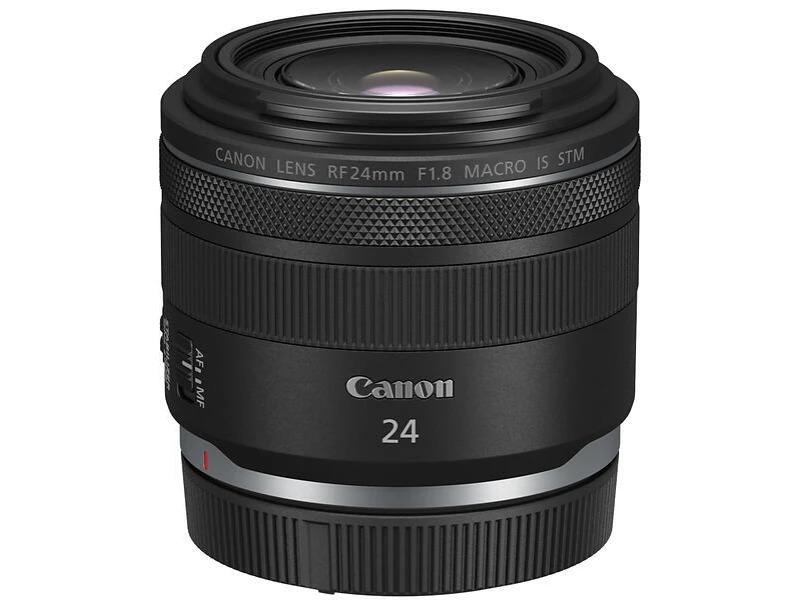Canon 7-63mm T2.6 vs Canon RF 24mm F1.8 MACRO IS STM
Canon 7-63mm T2.6 vs Canon RF 24mm F1.8 MACRO IS STM
When comparing Canon RF 24mm F1.8 MACRO IS STM and Canon 7-63mm T2.6, which one is better?
1. Lens Weight Comparison
Regarding the weight of the lenses, Canon RF 24mm F1.8 MACRO IS STM is the winner with a weight of 270 g compared to the 1980 g that Canon 7-63mm T2.6 weighs.
Winner: Canon RF 24mm F1.8 MACRO IS STM
Regarding weight: The weight of a lens is something you need to consider, since you have to carry it around on the camera as long as you're shooting. It adds to the total weight of your camera and it's important to keep the weight low if you get tired in your arms when taking photographs or filming.
2. Lens Mount Comparison
The lenses each feature different lens mounts — the Canon 7-63mm T2.6 features a Arri PL Mount while the Canon RF 24mm F1.8 MACRO IS STM features a Canon RF — and because of this the preference varies. If you have a compatible camera, then of course that lens will be a better choice for you.
Winner: Tied — It depends on your gear
Regarding lens mount: Popular lens mounts are Canon RF and EF, Micro Four Thirds and Nikon Z. Different lens mounts lets you connect different lenses to camera bodies, but some might not be compatible. This can be helped by using an adapter, like a Canon EF to RF adapter.
3. Largest Aperture Comparison
The Canon RF 24mm F1.8 MACRO IS STM has the largest aperture of the two lenses at 1.8 compared to the 2.6 aperture of Canon 7-63mm T2.6. This means that you get more light to your sensor using Canon RF 24mm F1.8 MACRO IS STM wide open, and therefore it might be a better lens in dark situations.
Winner: Canon RF 24mm F1.8 MACRO IS STM
Regarding largest aperture: A lower aperture number means that the widest aperture on the lens is larger. This means that more light will hit the sensor and also that the depth of field will be shallower, better separating your subject from the background.
4. Focus Distance Comparison
Canon RF 24mm F1.8 MACRO IS STM features a minimum focus distance of 14 cm while Canon 7-63mm T2.6 has a minimum focus distance of 60 cm. Depending on your shooting style, the Canon RF 24mm F1.8 MACRO IS STM might be a better choice.
Winner: Canon RF 24mm F1.8 MACRO IS STM
Regarding minimum focus distance: The minimum focus distance of a lens is the smallest distance from the lens to the subject you want to be in focus; subjects closer than the lens' minimum focus distance will not be in focus. Whether or not this is important to you is up for you to decide, but some want to take close photos and videos and in those cases it's important to have a lens with a low minimum focus distance.
5. Lens Type Comparison
The Canon 7-63mm T2.6 is a Zoom lens while the Canon RF 24mm F1.8 MACRO IS STM is a Prime lens. Whether or not a zoom lens or a prime lens is what you need, is up to you to decide; they both have their respective strengths and weaknesses.
Winner: Tied — It depends on your gear
Regarding type: There are two types of lenses; zoom lenses and prime lenses. Prime lenses have a fixed focal length and cannot be zoomed, while zoom lenses have a focal length range and can be zoomed in to get closer to the subject. Prime lenses are usually lighter, cheaper and let in more light. Zoom lenses are more versatile but are more expensive since they require a more advanced lens design.
Specifications
Full specifications table of Canon 7-63mm T2.6 and Canon RF 24mm F1.8 MACRO IS STM:
| Canon 7-63mm T2.6 | Canon RF 24mm F1.8 MACRO IS STM | |
 |  | |
| Brand | Canon | Canon |
| Weight | 1980 g | 270 g |
| Lens Mount | Arri PL Mount | Canon RF |
| Focal Length | 7 - 63 mm | 24 mm |
| Largest Aperture | 2.6 | 1.8 |
| Anamorphic | Missing | No |
| Minimum Focus Distance | 60 cm | 14 cm |
| Type | Zoom | Prime |
| Aperture Range | 2.6 - 22 | Missing |
| Filter Thread Diameter | Missing | 52 |
| Lens Front Diameter (Not Filter Thread) | 95 mm | 74.4 mm |
| Image Stabilization | Missing | Yes |
| Autofocus | Missing | Yes |
| Macro | Missing | Yes |
| Full Frame Coverage | Missing | Yes |
| Stabilization Type | Missing | Canon Image Stabilizer (IS) |
